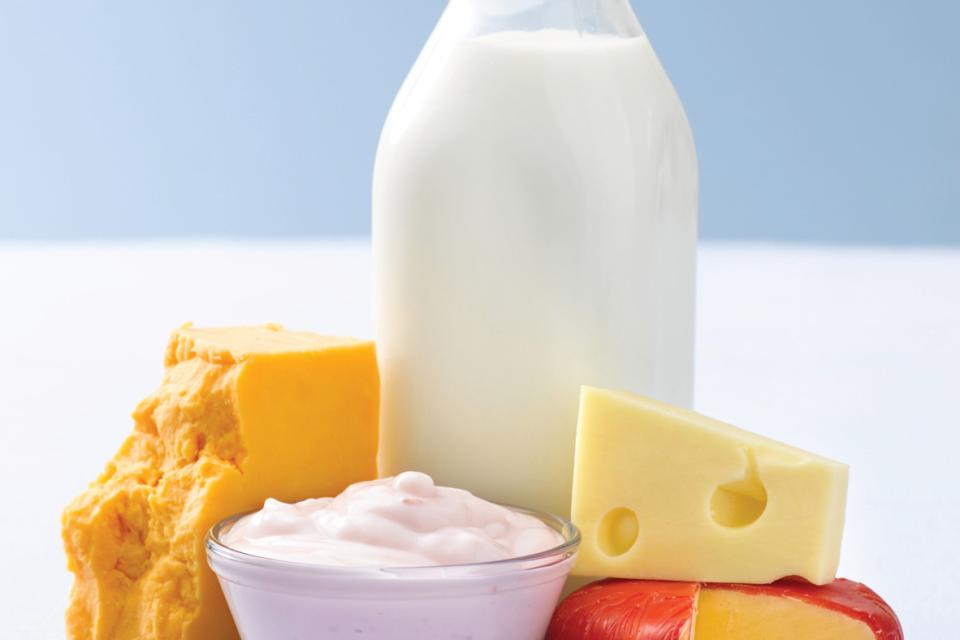In Canada, pasteurization of milk destined for consumption is mandatory under the Food and Drug Regulations.2 Pasteurization is a protective measure to ensure consumers’ health.3
Invented in the 19th century by microbiologist Louis Pasteur, pasteurization involves heating milk below its boiling point for a short time. This type of process destroys nearly 100% of pathogenic bacteria, yeast and mould, and 95% to 99% of other non-pathogenic bacteria. Pasteurization also inactivates enzymes that cause rancidity.4
In practice
- Pasteurization is essential to ensure the safety of milk and increase its shelf life.1
- With the exception of decreasing riboflavin (vitamin B2), pasteurization does not significantly decrease the nutritional value of milk.5
- However, even when pasteurized, milk remains an excellent source of riboflavin (vitamin B2).5
There are different types of pasteurization methods for white milk classified according to the temperatures and times used:6,7
| Method | Temperature (°C) | Time |
| Pasteurization | ||
| Low temperature for a long time | 63 | 30 minutes |
| High temperature for a short time | 72 | 15 seconds |
| Ultra-pasteurization or uperization | 125 to 138 | 2 to 4 seconds |
| Ultra-high-temperature pasteurization | 140 | 4 seconds |
The most common pasteurization method for white milk is 72° C for 15 seconds. It allows large quantities of milk to be processed in a short period of time. Ultra-high-temperature pasteurization requires the combination of a temperature of 140° C for four seconds and sterile packaging, which significantly increases the shelf life of milk.6,7
The effects of pasteurization on nutritional value
Although the benefits of pasteurizing milk are well established, some consumers wonder if this type of thermal process destroys some of the nutrients. Researchers in Ontario looked into the question and published a systematic review and meta-analysis of 40 studies.5 The results show that milk pasteurization decreases its concentrations of vitamins B1, B2, B12 and C, and folate. Following pasteurization, milk is still a source of thiamine (vitamin B1) and an excellent source of vitamin B12. A significant decrease in riboflavin (vitamin B2) was observed; however, pasteurized milk remains an excellent source of riboflavin.5 As for other vitamins, the effect on the nutritional value of milk is not significant since vitamin C and folate are found at relatively low levels prior to pasteurization. In addition, vitamin D fortification has been mandatory since 1975 for pasteurized milk sold in Canada, making it an excellent source of this vitamin, unlike raw milk, which contains only a very small amount.
Some may also question what effects pasteurization has on the proteins and enzymes present in milk. It is well established that whey protein, particularly β-lactoglobulin, is partially denatured during heating. However, denaturing whey protein does not affect the nutritional value of milk.8,9 About 10% of these proteins are denatured during pasteurization and 70% during ultra-high-temperature processing.8 There is a misconception that raw milk is easier to digest because it contains “active” enzymes, which are deactivated by pasteurization.10 Although some enzymes are denatured by pasteurization, the same phenomenon can also occur during digestion due to the presence of acids in the stomach. Importantly, the enzymes found in milk are not required for digestion.11
References
- Lejeune JT and Rajala-Schultz PJ. Food safety: unpasteurized milk: a continued public health threat. Clin Infect Dis 2009;48:93-100.
- Government of Canada. 2021. Justice Laws Website. Food and Drug Regulations, part B, division 8, dairy products. www.laws.justice.gc.ca. Accessed September 13, 2021.
- Leedom JM. Milk of nonhuman origin and infectious diseases in humans. Clin Infect Dis 2006;43:610-615.
- Brown AC. Understanding Food: Principles and Preparation, 5th edition, Cengage Learning, 2015, Chapter 10, Milk, p. 216-217.
- Macdonald LE et al. A systematic review and meta-analysis of the effects of pasteurization on milk vitamins, and evidence for raw milk consumption and other health-related outcomes. J Food Prot 2011;74:1814-1832.
- Vuillemard JC et al. Science et technologie du lait, 3e édition, Les Presses de l’Université Laval, 2018, chapitre 4, Les laits de consommation, p. 181 and 195.
- Canadian Food Inspection Agency. Dairy processing: High temperature short time (HTST) pasteurization systems. Requirements for the Safe Food for Canadians Regulations. www.inspection.canada.ca. Accessed September 13, 2021.
- Rolls BA and Porter JW. Some effects of processing and storage on the nutritive value of milk and milk products. Proc Nutr Soc 1973;32:9-15.
- Douglas FW et al. Effects of ultra-high-temperature pasteurization on milk proteins. J Agric Food Chem 1981;29:11-15.
- White FM and McCarty ME. Raw milk and health in humans. Can Med Assoc J 1982;126:1260-1262.
- Potter ME et al. Unpasteurized milk. The hazards of a health fetish. JAMA 1984;252:2048-2052.


